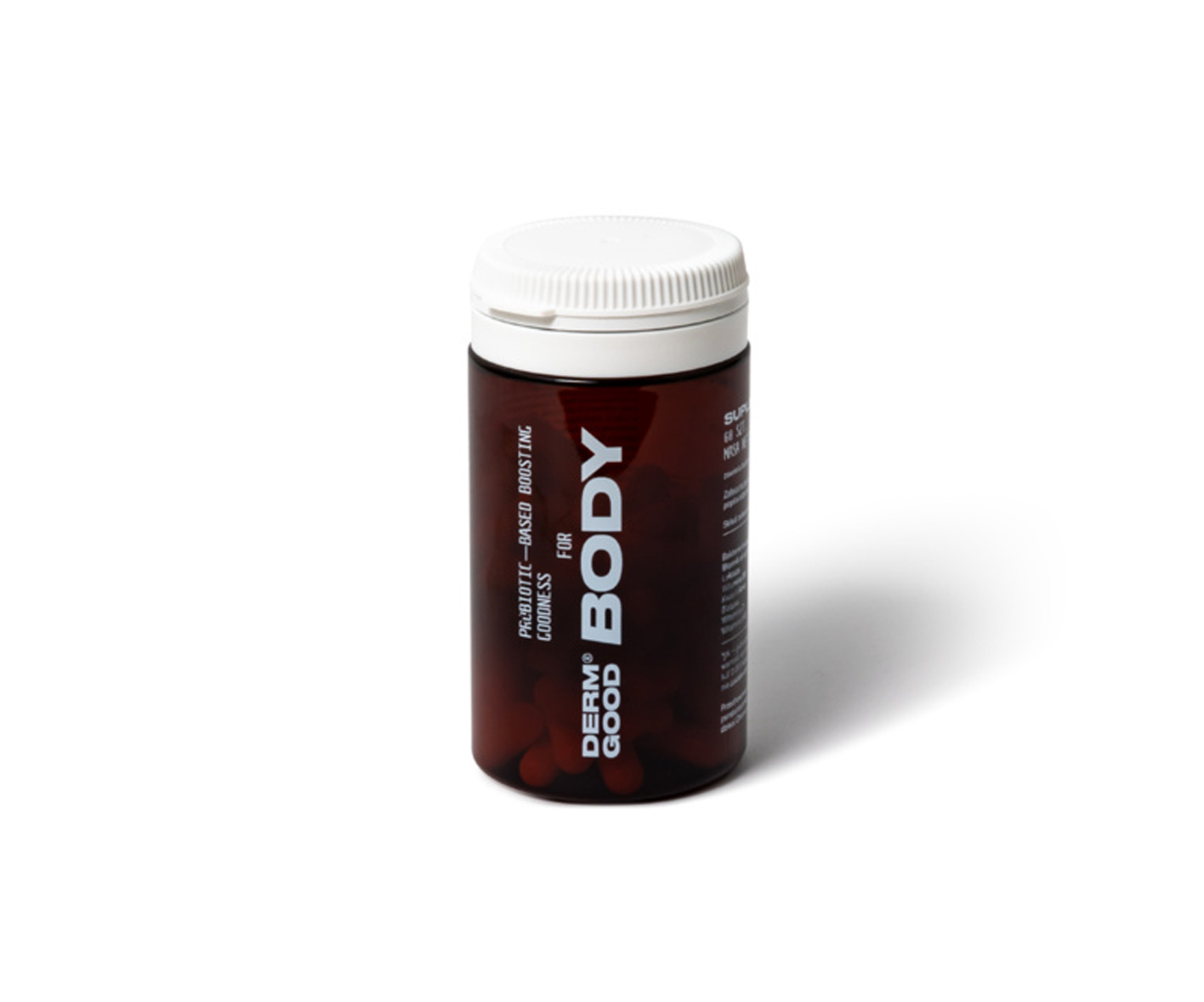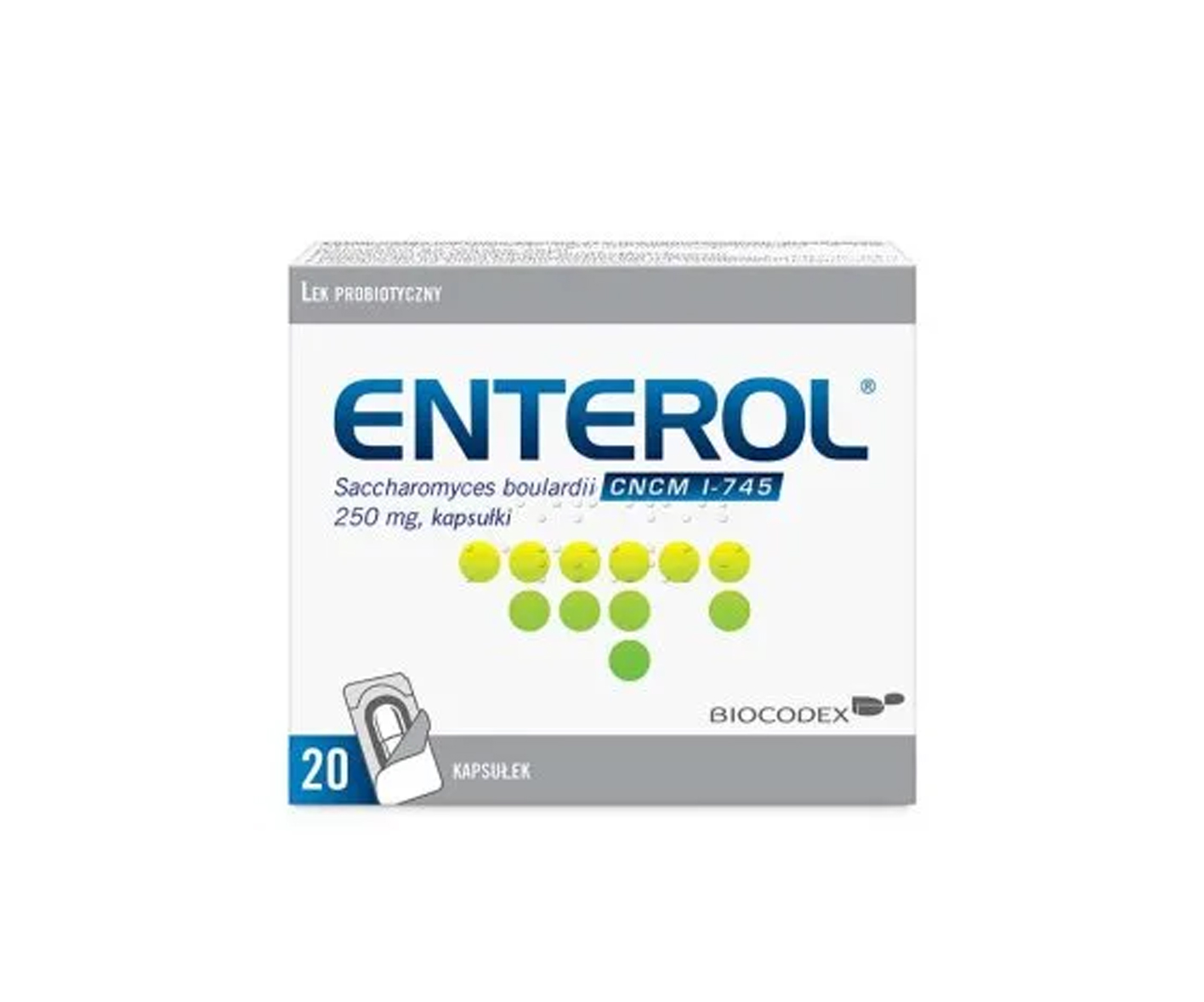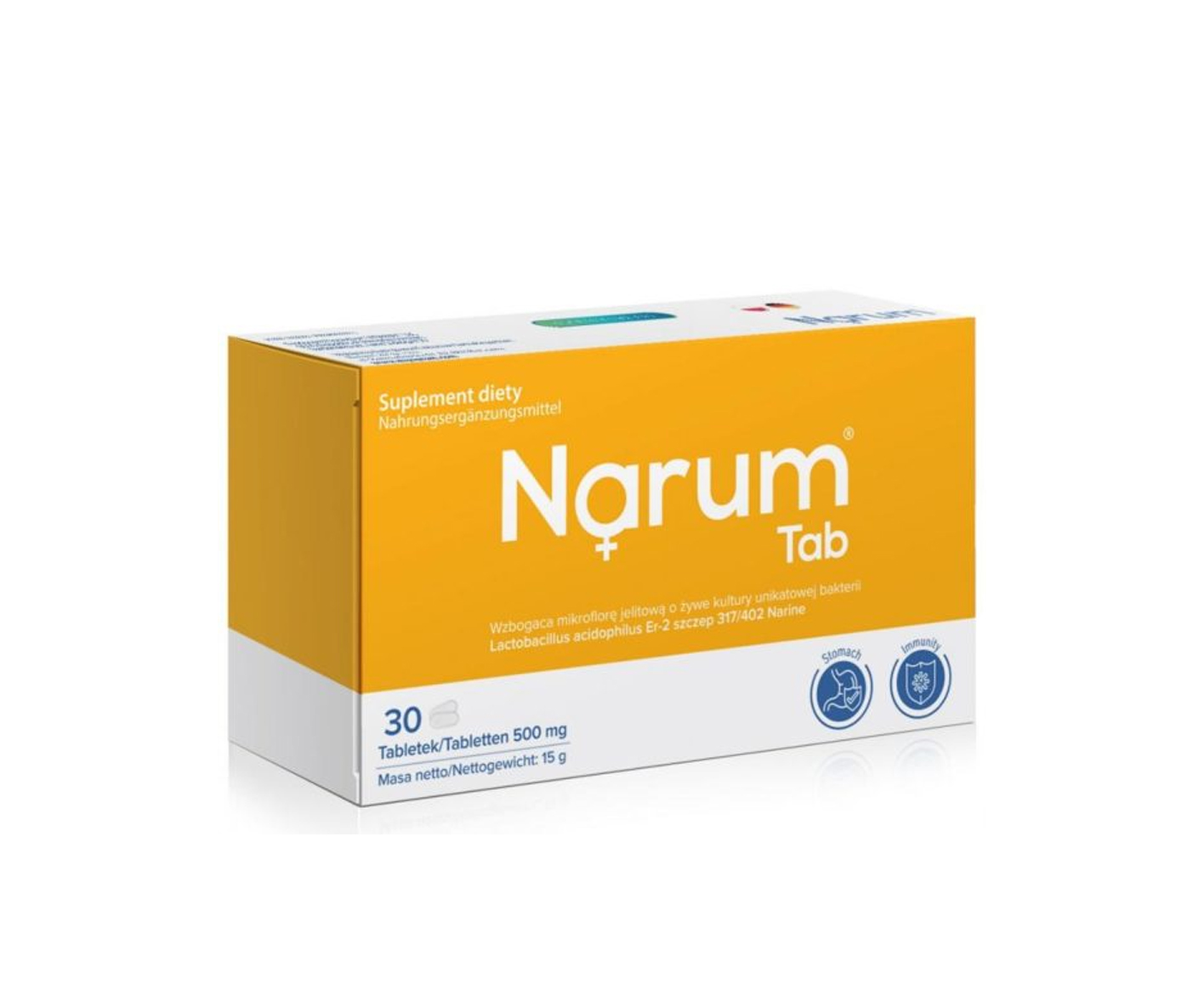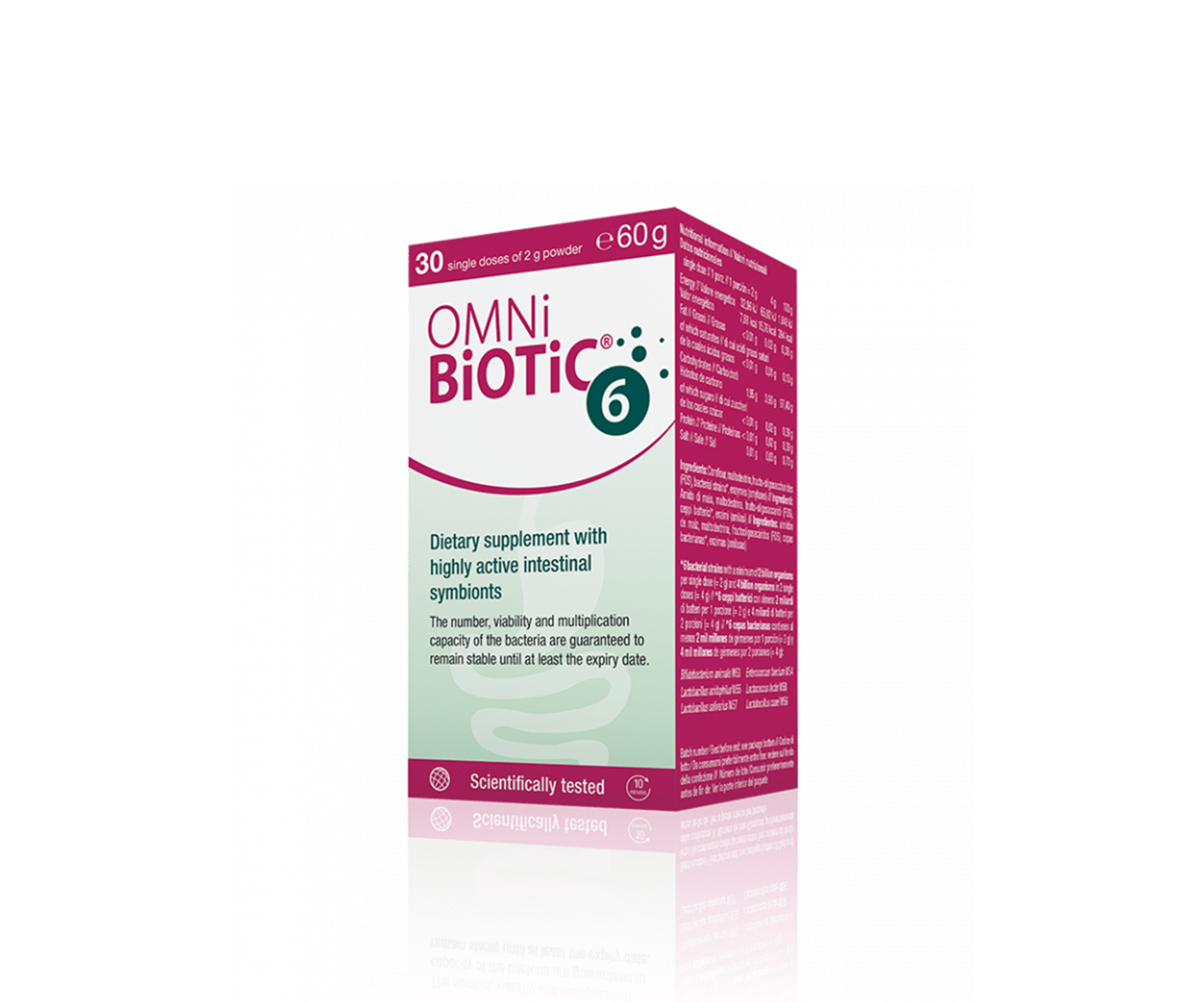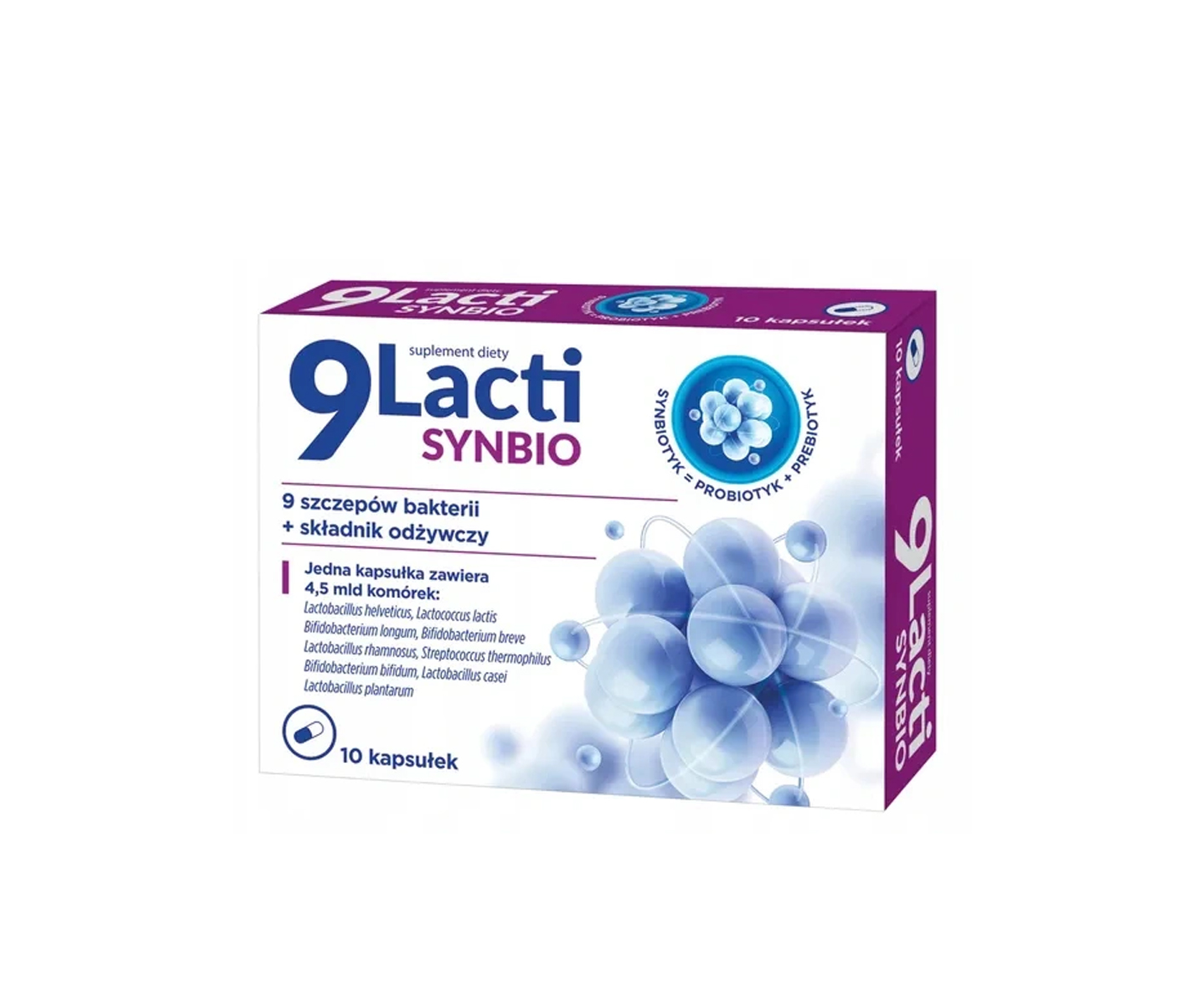Benefits
- Adequate amounts of Lactobacillus and Bifidobacterium (10 billion).
- Restores the balance of the intestinal microflora.
- Supports proper digestive processes.
- Prevents lactose intolerance.
- Supports the immune system.
- Supports the proper functioning of the entire organism.
- Improves skin condition.
- Minimises the effects of taking antibiotics.
- Economical packaging (60 capsules).
Disadvantages
- Only available in selected shops.
The ranking of probiotics opens with the dietary supplement Derm Good - a preparation that effectively supports normal digestive processes and restores the balance of intestinal microflora. The preparation's capsules contain selected strains of Lactobacillus and Bifidobacterium bacteria, essential for maintaining intestinal health. The daily dose contains a total of 10 billion bacterial colony-forming units. The use of the Derm Good supplement during antibiotic therapy supports the immune system, while the addition of vitamins A, B6, B12 and folic acid ensures the well-being of the entire body and takes care of the healthy appearance of the skin. The daily intake is just 1 capsule. If you are wondering how to improve the bacterial flora in your gut - Derm Good is the best probiotic combo.
Benefits
- They contain the yeast Saccharomyces boulardii.
- They support the treatment of infectious and rotavirus-induced diarrhoea.
- Support immunity during medication and antibiotics.
- Support the intestinal bacterial flora.
- Also suitable for children.
Disadvantages
- Few capsules in the pack.
- Unpleasant taste and smell.
- The capsule form makes it difficult to administer to a child.
If you do not know which probiotic will also be suitable for children, Enterol is the answer. It is a very good probiotic recommended for the treatment of acute infectious diarrhoea and rotavirus-induced diarrhoea, supporting the body during medication and antibiotics and supporting the intestinal bacterial flora. Enterol is based on the action of the yeast Saccharomyces boulardii, which strengthens the gastrointestinal flora and protects the intestinal epithelium. The dosage of Enterol depends on the severity of the diarrhoea and other digestive complaints. It is best to read the information in the leaflet before taking.
Benefits
- The supplement supports the regeneration of the organs of the digestive tract.
- Supports healing in intestinal infections.
- Rebuilds the bacterial flora after antibiotic use.
- Suitable for children from 2 years of age.
Disadvantages
- The preparation contains only one strain of bacteria.
- Very complicated dosage.
- A large number of tablets for daily adult consumption.
- Tablets are difficult to administer to young children.
The dietary supplement Narum is another good probiotic for the intestines, which is also suitable for children (from 2 years of age). The tablets contain the bacterial strain Lactobacillus acidophilus Er-2 317/402 Narine, which effectively supports the regeneration of the organs of the digestive tract e.g. after surgery, supports the treatment of acute intestinal infections and rebuilds the bacterial flora e.g. after antibiotic therapy. In order to achieve the desired effects, it is recommended to use Narum for 5-6 weeks.
Benefits
- The supplement rebuilds the bacterial flora after pharmacotherapy.
- Indicated in support of celiac disease treatment.
- It regulates intolerance to lactose, gluten and histamine, among others.
- Helpful for food and skin allergies.
- Easy dosage.
Disadvantages
- The large number of bacterial strains can interfere with each other.
- Requires a long period of application.
- The powder form makes it difficult to take.
- High price.
The probiotic dietary supplement Omni-Biotic is particularly recommended for intolerances to lactose, fructose, histamine, gluten, as well as food and skin intolerances and allergies. It contains as many as 6 bacterial cultures designed to support and rebuild the normal intestinal bacterial flora, disrupted e.g. during antibiotic intake or as a result of diseases such as coeliac disease. Omni-Biotic comes in the form of a powder to be dissolved in water. It is recommended to consume 1-2 sachets daily.
Benefits
- The formulation supports the maintenance of normal intestinal microflora.
- Prevents gastrointestinal complaints.
- Easy dosage.
- Designed for children over 3 years of age.
- Favourable price.
Disadvantages
- Low bacterial content (4.5 billion).
- Very few capsules per pack.
- The pack lasts a short time.
- Low profitability
The ranking of probiotics 2023 closes with 9 Lacti Synbio. This probiotic is intended for adults and children over 3 years of age. One capsule of the product contains 4.5 billion cells of nine strains of probiotic bacteria and fructooligosaccharides. It is recommended in supporting the maintenance of normal intestinal microflora. In addition to probiotics, 9 Lacti Synbio also contains nutrients to support the digestive system and protect against digestive complaints. It is recommended to take 1 capsule daily.
Probiotics - the way to gut health
When you need to support your body with probiotics, it is important to know what types of probiotics there are and what action they show. On the market you will find probiotics in the form of dissolving powder, capsules and drops.
Another distinction between probiotics concerns preparations for children and adults. Probiotics for children can be used in toddlers from their first days of life to support the still-forming digestive system. Probiotics are great for colic. Lactobacillus reuteri strains are best for this ailment. Probiotics are most often given to the youngest children in the form of drops.
Probiotics for adults are usually used in the form of capsules or powder to be dissolved in water. It is important to take the correct amount of these micro-organisms. Only then will the probiotic fulfil its effect.
It is assumed that lactic acid bacteria of the Lactobacillus and Bifidobacetrium genera are the most beneficial for the health of the body. Strains of Escherichia or Sascharomycces, such as Sascharomyces cerevisiae ssp boulardi, also have a beneficial effect on the digestive system. However, it is important to remember that the health-promoting effect refers to the specific strain, not the genus or species. A probiotic for adults or children is tailored to their needs in terms of content, quantity and form of administration.
How do I choose the best probiotic?
When selecting the preparations for our ranking of the best probiotics, we considered the following questions:
Are the probiotics effective in their action?
What is the type and content of bacterial strains in the preparation?
What is the recommended dosage of the probiotic?
Is the probiotic easy and pleasant to use?
Is the packaging efficient?
Is the price of the product commensurate with its quality?
Ingredients of probiotics
A probiotic may contain single strains of lactic acid bacteria (Lactobacillus, Streptococcus, yeast strains (Saccharomyces), mould cultures (Aspergillus) or lactic acid bacteria together with selected yeast strains.
Two probiotic groups are most commonly distinguished in the composition of probiotics:
Lactobacillus - this is the most common probiotic. You can find it in yoghurt and other fermented products. Its strains help the body with infectious diarrhoea.
Bifidobacterium - found in some dairy products. It can provide support for gastrointestinal complaints.
What are probiotics?
Probiotics are so-called good bacteria that primarily support the health of the digestive system and rebuild the intestinal microflora, damaged e.g. during antibiotic use. Probiotics include lactic acid bacteria and yeast.
Probiotics prevent intestinal infections. They balance the pH level in the stomach by producing organic acids. Probiotics also help to synthesise antibodies so that the body is able to fight off microorganisms more quickly.
Their health-promoting properties are useful in the treatment of diarrhoea or viral infections, such as rotavirus, which causes diarrhoea in children and infants. In addition, probiotics alleviate the symptoms of lactose intolerance.
Natural sources of probiotics include yoghurt, kefir, pickles, kimchi or sourdough bread.
What is the best probiotic?
Unfortunately, there is no answer to this question. The effectiveness of probiotics depends on the type and amount of strain and the health ailment. Other probiotics are taken during antibiotic therapy, others for diarrhoea and still others for viral infections.
Always pay attention to the number of bacterial strains in a single tablet or sachet. The colony-forming unit is designated as CFU. Many experts recommend probiotic supplements containing at least several billion units.

